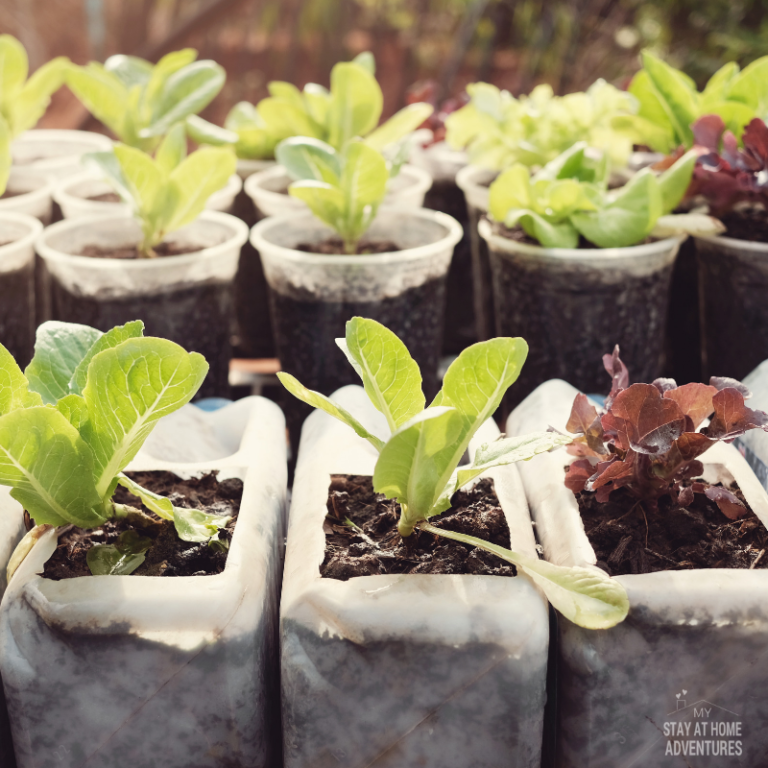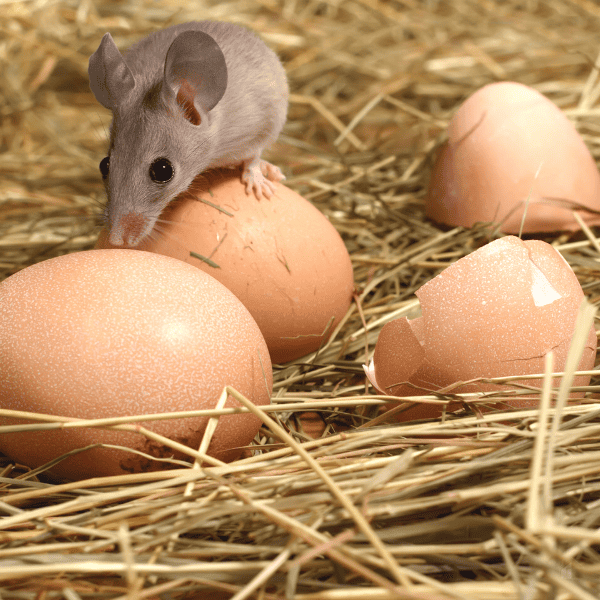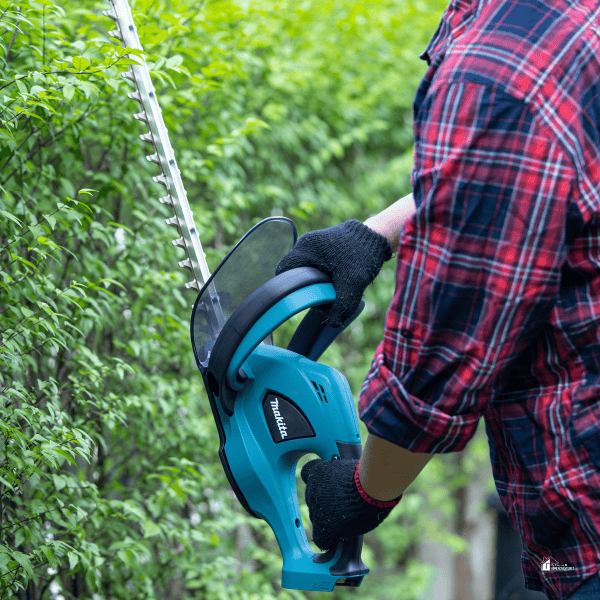16 Best Medicinal Garden Plants To Grow
This post may contain affiliate links which might earn us money. Please read my Disclosure and Privacy policies hereA medicinal garden is another type of garden we recommend beginners to grow. A medicinal garden has many benefits and today we are discussing the best medicinal garden plants beginners can grow.
Let's begin, but first:
While there are also a lot of medicinal plants that are approved by modern health professionals and organizations, always consult your doctor if you like to start taking one while you have a medicine that you also need to take.
There are times that certain herbal medicines and modern medicines when taken together can have side effects.
When starting to grow your garden avoid these beginner gardener mistakes. There are a lot of plants that can be easily grown in your new medicinal garden.
But I suggest not to start with too many. Try at least 2 at first. Then, when they grow fine, add up another 2 new kinds of plants. Don’t be discouraged if the plants die under your care. Everyone experiences that. Find out what happened. It is a learning experience.
Before buying seeds or seedlings that you wish to grow into your medicinal garden, know your zones or weather conditions. There are plants that grow best depending on the area. There are also plants that may not survive easily although they may be very easy to grow in another area.
Pick a good place for your medicinal garden. It is best that your garden is facing the morning sun and avoid the noon and afternoon sun, but not too shady. Most of these plants need some sunlight.
You might like these posts:
There are also plants that need bright light but no or very little direct sunlight. And there are those that need a lot of direct sunlight.
You need to learn about the plants you’d like to grow. If able to, speak to someone who has been growing the plants. If you prefer to buy them from greenery or nursery, ask the seller or the one who is taking care of the plants. Most probably they know the ‘tricks’ of growing them easily.
Top Medicinal Garden Plants for Beginners
In the meantime, I made my own list of medicinal plants that anyone can grow very easily. These are perfect for beginners.
You want to know something about
Here are some best and easy-to-grow herbs for your medicinal garden.
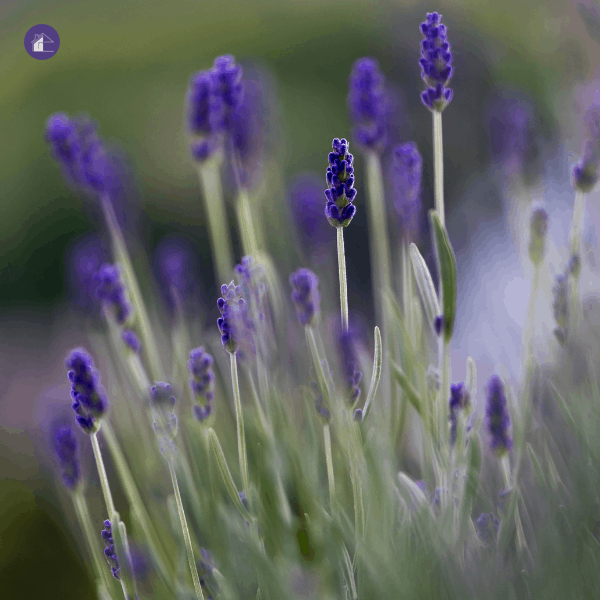
1. Lavender
Lavender is a small evergreen shrub growing from one to three feet tall with gray-green needle-like foliage. The flowers can be purple or white depending on the variety. They are sparsely arranged on spikes at the tips of long bare stalks and produce small nutlet fruits.
The cause of the plant’s fragrance is the shining oil glands that are embedded among tiny star-shaped trichomes or the plant hairs that cover the flowers.
The lavender is usually prepared as an essential oil for fragrance and aromatherapy. Dried flowers are also available in small bags and are usually used as a fragrance or air freshener.
As tea, fresh or dried flowers are infused in water and drink. The taste is slightly bitter with a cool sensation.
Studies show that lavender has antibacterial and antifungal properties. For medicinal purposes, this is being consumed as an antidepressant, antimicrobial, mild sedative, as carminative (preventing gas formation in the gastrointestinal tract). A strong infusion of flowers is also used for sitz baths.
Propagation is better done by cuttings or by dividing the roots, as the plants in cultivation do not always produce seed. If it does, the growth is very slow. Planting lavender is best during springtime so that when the winter comes, they are already mature enough to survive. They thrive in most soil qualities.
But if it is too compacted, add some organic matters to improve drainage. Water once or twice a week. To harvest flowers, snip off the stem as long as possible before the flowers open. It is best to harvest in the morning when oil is most concentrated.
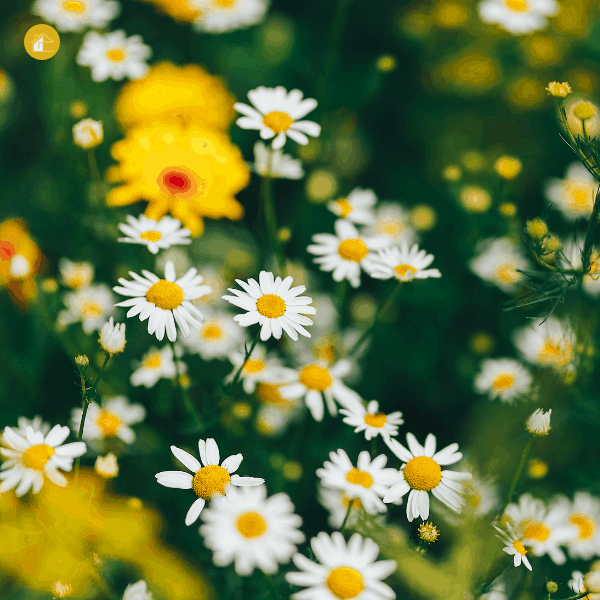
2. Chamomile
Chamomile is an evergreen perennial growing to up to 1 foot. It is in leaf all year round and hardy to zone 4. It usually flowers from June to July and the seed ripens from July to October.
Prefers well-drained soil and can also grow in nutritionally poor soil. It can also tolerate drought and can grow in semi-shade or full sun. It can be easily propagated by seed but needs light to germinate.
The honey scent and sweet taste of Chamomile are well-liked. It is very popular as a mild sedative and relaxant herb. It is best consumed as a tea. Chamomile has a high level of azulene. It is also used as a pain reliever, anti-inflammatory, and sleep aid.
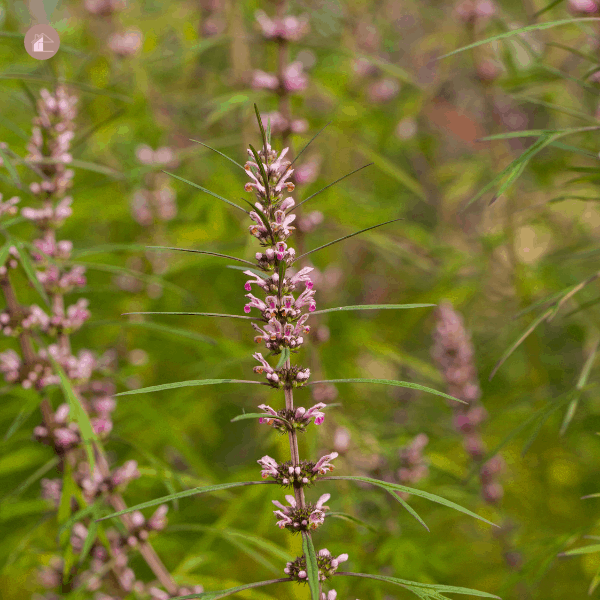
3. Motherwort (Leonurus cardiaca, Lamiaceae)
Also called lion’s tail, motherwort is very easy to grow. It is an upright, prickly bush with dark green leaves and furry purple or pink flowers with an unpleasant smell and bitter flavor. It is native to Asia and Southeastern Europe.
However, it can be found worldwide and it is considered invasive in the US. If you didn’t find them growing in your garden, I’m sure you can easily find them somewhere in some empty lot, bring some home to plant, but make sure to contain it to avoid becoming invasive.
The parts of motherwort that grow above the ground are used to make medicine. It is used as a tea or tincture and is considered an almost all-around medicine. The plant is known as a remedy for anxiety, stress.
It can also relieve pain like headaches, muscle aches and sprains, and menstrual cramps. It is also used for the absence of menstrual period, and by menopausal women to ease hot flashes and hormonal-induced irritability.
Consumed as tea, motherwort is also used for heart conditions, including irregular and fast heartbeat, heart symptoms due to anxiety, and even heart failure.
It is also used to relieve intestinal gas and overactive thyroid or hyperthyroidism. This is also available in capsules and tablet forms as supplements.
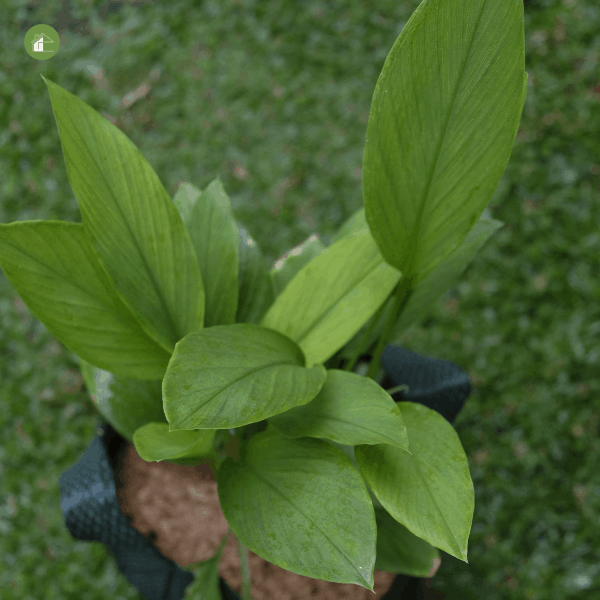
4. Turmeric
A product of Curcuma longa, a rhizomatous herbaceous perennial plant, this turmeric is a relative to ginger. It has a vivid yellow-orange spice with a dull orange interior and is common to Indian, Southeast Asian, and Middle Eastern cuisine. Curcumin is the active ingredient in the spice, which is also the other name of turmeric.
Turmeric has been very popular for its medicinal values since many centuries ago. It has been used for Ayurvedic and Chinese medicines for its anti-inflammatory, analgesic, antiseptic activity, and for its low toxicity. Many recent studies confirmed its anti-cancer activities. Not surprising as it is rich in antioxidants.
For abdominal problems, loss of appetite, respiratory infections, jaundice, headaches, certain liver disease, diabetes, cancer, and a lot more, turmeric is usually taken orally for these treatments or relief. As an anti-inflammatory to treat some skin conditions like acne, infected wounds, bruising, joint pain, body pains, and arthritis, turmeric is used topically.
Turmeric can grow very easily in the ground or in a container. It can be grown indoors especially during winter. You can buy turmeric in a grocery store or online. When choosing rhizomes, they should have some buds.
Cut the rhizomes into at least 2 inches making sure there are buds on them. If you are planting it in a pot, a potting soil mix can be used and should have a well-draining container. If on the ground, make sure the soil is amended with compost.
They don’t like a lot of sunlight, so they should be placed in a partially shaded area. Keep the soil damp but not too soggy to prevent rotting. Turmeric will sprout in 6-10 months.
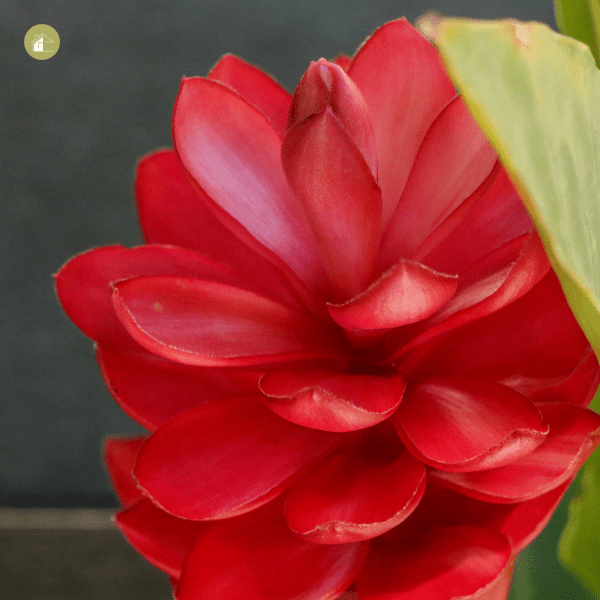
5. Ginger
A common condiment used in cooking, the rhizome of this ginger is also popular for its medicinal values. It contains many bioactive compounds that give a variety of impressive pharmacological and physiological activities.
For thousands of years, ginger has been used for the treatment of numerous ailments, like colds, nausea and other stomach issues, arthritis, migraines, and hypertension. It also showed to contribute as anti-carcinogenic, anti-diabetic, anti-tumor activity.
Studies proved that it can be effective in the treatment of motion sickness and arthritis, and also effective against pregnancy-induced nausea and vomiting. Ginger is anti-inflammatory, decongesting, and increases circulation, promoting warmth.
Ginger can be used fresh, dried, pickled, preserved, crystallized, candied, and powdered or ground. It has a somewhat peppery and slightly sweet flavor, with a strong and spicy aroma.
The concentration of essential oils increases as ginger ages and, therefore, the intended use of the rhizome determines the time when it is harvested.
Ginger likes to grow in a tropical environment, so it has to be hot and humid. You can get the ginger in a grocery store. Select a plump with new “fingers”, and greenish on the tips. About 4-5 inches long. Slice off the fingers about 1-2 inches long and with at least one bud. Dry them for 24-48 hours, then plant them.
If planted on the ground, make them 1 foot apart. Make sure the soil is amended with compost. If planted in the container, a potting mix will suffice and has to be well-draining.
Water enough and leaves will surely be seen in a week. The first harvest can be done as early as 4 months. It will fully mature in its 10 months.
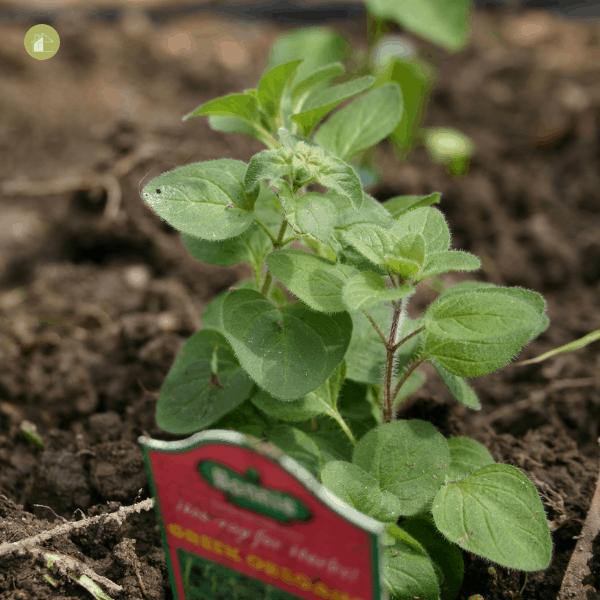
6. Oregano
Also called Mountain of Joy in Greek, Oregano is a shrubby herb with small, deep-green leaves with a kind of soft and almost fuzzy texture. It is very easy to care for and can be grown indoors or outdoors, in a container, or directly into the ground.
It can easily grow from seeds or cuttings and can be grown in areas prone to drought, too. Oregano can be a great companion plant for garden vegetables that would repel insects. To overwinter, cut back the plant to the ground and cover it with a layer of mulch.
Besides being commonly used for cooking, it is also popular for its medicinal purposes. It can be used as fresh or dried and crushed which is usually used for food. Other forms are tea, tincture, essential and infused oil, too.
The oregano has antibiotic, anti-viral, anti-fungal properties, and is rich in antioxidants. An excellent medicinal plant to include in your medicinal garden.
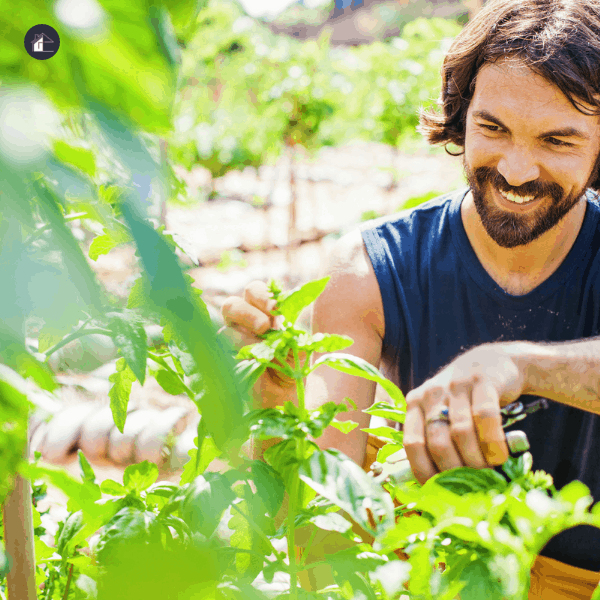
7. Basil
Basil is a flavorful, leafy green herb of the mint family. This aromatic herb is very popular as a food seasoning, as well as being used as teas. It is also used as a supplement for the many health benefits it can provide.
It’s rich in Polyphenolic flavonoid, a powerful antioxidant that protects the body’s structures from cell-damaging free radicals that can cause stroke and heart attack, some types of arthritis, asthma, certain types of cancer, and other disorders. Basil also has anti-microbial and anti-inflammatory properties. It is known to stimulate appetite, ease stomach upset, and support kidney function.
Basil has many different varieties. Thai basil, Genovese basil, lemon basil, holy or tulsi basil, African blue, and dark opal basil are only a few of so many varieties. But the most common is the sweet basil. It is enjoyable for the herbalist and other gardeners to have this collection of different varieties.
Basil is very easy to grow both by seeds and cuttings. They grow best in a location where they can have 6-8 hours of full sun, and with moist soil but drains well. They can grow well in containers or on raised beds.
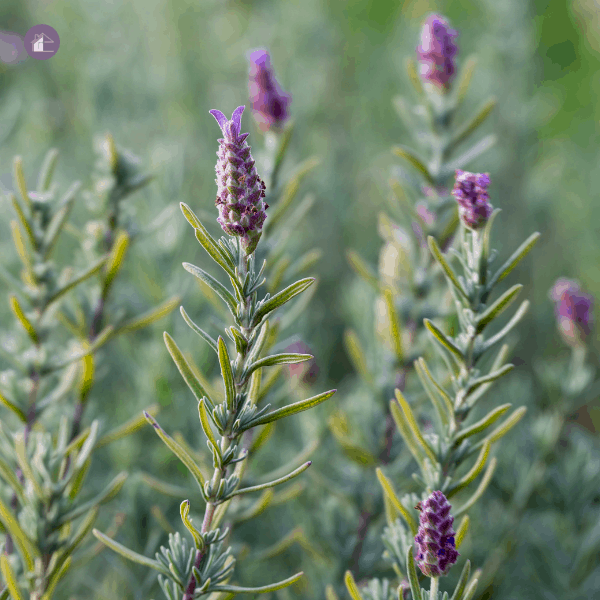
8. Rosemary
Another famous culinary herb, rosemary is a fragrant evergreen herb with small, needle-like leaves. The herb is native to the Mediterranean.
It is also very popular to include in herb and medicinal gardens. Fresh or dried leaves are used to season foods, especially meats, but they can also be used in soups, stews, and some vegetables.
Rosemary has been proven to be helpful for the brain, especially memory functions. This can be enjoyed as a tea using fresh or dried leaves.
The herb is rich in antioxidants, helps with blood circulation and low blood pressure. It also has some mild analgesic properties. Thus, it can alleviate muscle pains. It also relieves circulatory and respiratory complaints, digestive and nervous disorders.
According to the British Herbal Pharmacopoeia, rosemary can be used for “depressive states with general debility and indications of cardiovascular weakness”.
While the German Commission has approved the herb for use in dyspeptic issues internally and to support rheumatic and circulatory issues externally.
Rosemary grows best in hot, dry climates. It cannot withstand winters below 30 F. (-1 C.), it’s often better when growing rosemary plants to put them in containers, Provide them with well-drained, sandy soil and at least six to eight hours of sunlight.
Thoroughly water rosemary plants when the soil is dry to the touch but allow the plants to dry out between watering intervals. Even indoors, rosemary plants will require lots of light, at least six hours, so place the plant in a suitable location free of drafts.
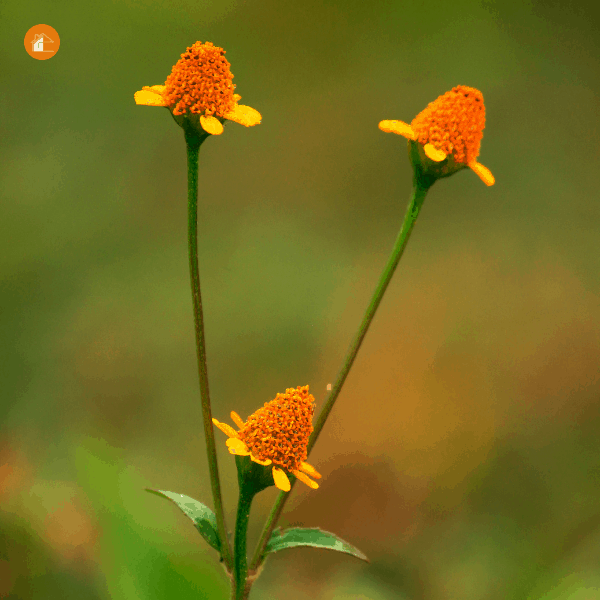
9. Spilanthes Acmella
Also known as the Toothache plant, this plant has golden, globe-shaped flowers with a red center, which also earned the name eyeball plant. Spilanthes is one of the strongest sialogogues (saliva-promoters).
A tiny nibble from one of the flowers will set your mouth to drool. The tingly numbing sensation can relieve toothaches. It is used in many tooth and gum formulas, as it is antimicrobial, stimulating, and acts as an oral anodyne.
All the parts of the plant above ground are medicinal. They can be chewed fresh or made into a tincture. It has plant compounds called flavonoids that can reduce or interfere with the perception of pain.
Besides toothaches, this medicinal plant is also being used for stomatitis, gastric ulcers, dry mouth, dermatitis, and even as diuretics.
This medicinal plant is grown annually and is one of the easiest to grow. It will do well in average to rich soil, and also in full sun. Just make sure to water during dry spells. Spilanthes is a low-growing herb that rarely exceeds 1 foot (30 cm) in height. It can form a bushy cover on the ground.
Sow seeds after the danger of frost have passed or sow them in the greenhouse. They can be easily transplanted, and will also self-sow. Harvest them during the growing season by cutting them back to 6 inches. They will grow again nicely before frost.
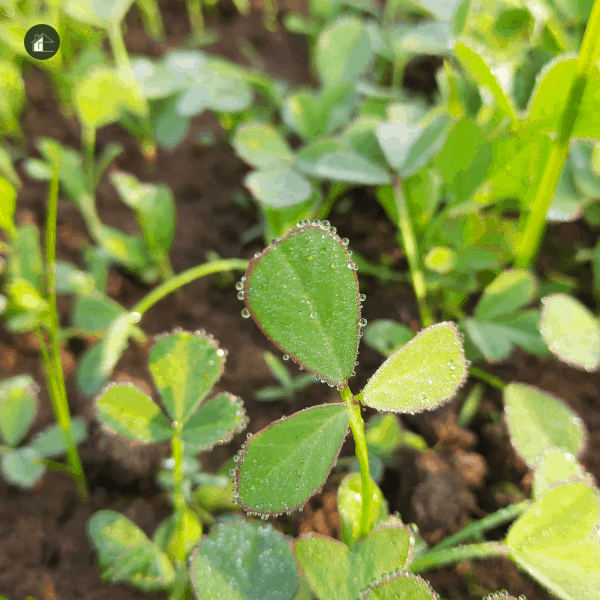
10. Fenugreek
Fenugreek (Trigonella foenum-graecum) is an herb of a legume family. It has green leaves, small white flowers, and pods that contain small, golden-brown seeds It grows around 2-3 feet.
The seeds and powder are common ingredients in Indian dishes and are often taken as a supplement because of the wide range of health benefits and medicinal properties. It is also a common household spice and thickening agent. It also became an ingredient in making soap and shampoo.
For many years, fenugreek has been used in alternative and Chinese medicine to treat skin conditions and many other diseases. It has the benefits of lowering blood sugar levels and boosting testosterone.
Fenugreek has been advised to breastfeeding mothers because it can increase milk production. It can also help with appetite control, reduce cholesterol levels and lower inflammation. Some studies show that it also has anti-cancer properties. It also has an antifungal and antibacterial effect
Fenugreek is a quick-growing annual and can be a useful cover crop to fix nitrogen in the soil, a critical nutrient for plant growth. It is very easy to grow but does not transplant well. To grow, it is usually sown from seed.
The chance of frost has passed and the soil has started to warm. Best to start from late spring to late summer. An average, well-draining soil will do, but it also prefers neutral to slightly alkaline. Fenugreek likes to be in direct sunlight for at least 4-5 hours a day.
It produces leaves that are ready to harvest in 20-30 days. Trim leaves to encourage branching and increase flowering and seed production.
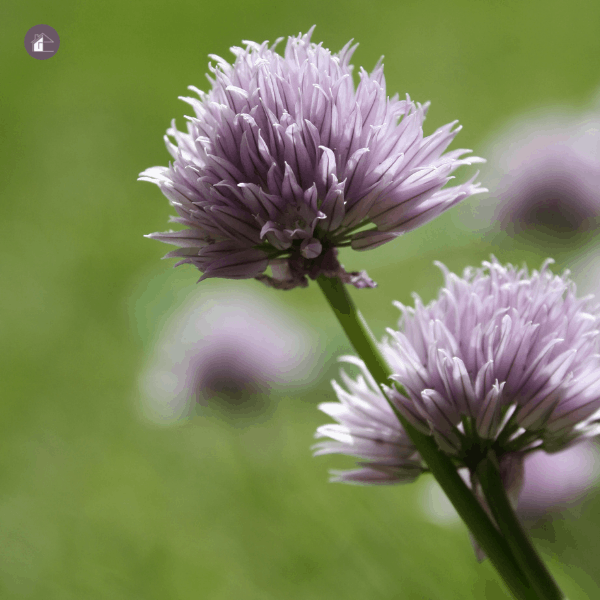
11. Chives
Chives, or Allium schoenoprasum, is a green herb with a mild onion-like flavor that is also popular in culinary dishes. It is a bulbous plant with long and hollow stems which are commonly sliced and then added to salads, sauces, soups, and fish. The unopened flower buds are grounded and can be used as a spice.
Chives contain nutrients that are important for sleep and bone health. Chives are also heart-healthy as they help regulate cholesterol and lower blood pressure. Some research linked the chemicals in chives with anticancer effects, too.
Chives are great to be included in the medicinal garden. It is an excellent companion plant for strawberries, parsley, tomatoes, and carrots. They enhance each other when they grow alongside. Chives attract beneficial insects, as well as repel unwanted bugs.
Chives can thrive in full sun. The easiest way of growing chives is by planting rooted clumps in spring after frost danger has passed.
Replant new clumps in soil enriched with organic matter, such as fine compost. They can also be grown in pots with good drainage. Divide established plants every three to four years. Spring is the best time for division.
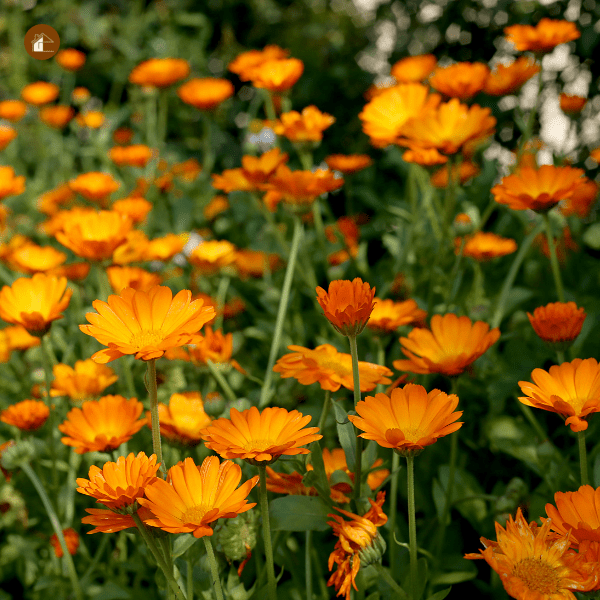
12. Calendula
Also called Pot Marigold, is a short-lived aromatic herbaceous perennial, growing to around 80 cm (31 in) tall. It has oblong-lanceolate leaves, about 2-7 inches, and is hairy on both sides. The golden-colored edible flowers are the most important part.
It has antibacterial and moisturizing properties that make it great for homemade salves, lotions, lip balms, or ointments to soothe insect bites, sunburns, inflamed rashes, and even smooth rough skin. Flowers are also used to garnish salads to add colors.
Leaves can also be made into a poultice. It is believed to help scratches and shallow cuts to heal faster, and to help prevent infection.
As one of the favorites among herbalists, calendula is also very easy to grow whether on grounds or in containers. It can grow in just about any place in partial to full sunlight.
They can easily be propagated by seeds. They germinate and grow fast, displaying beautiful flowers continually by summer as they mature.
To harvest, simply pick the whole flower heads during late summer mornings when they are just opening, and then dry them before using.
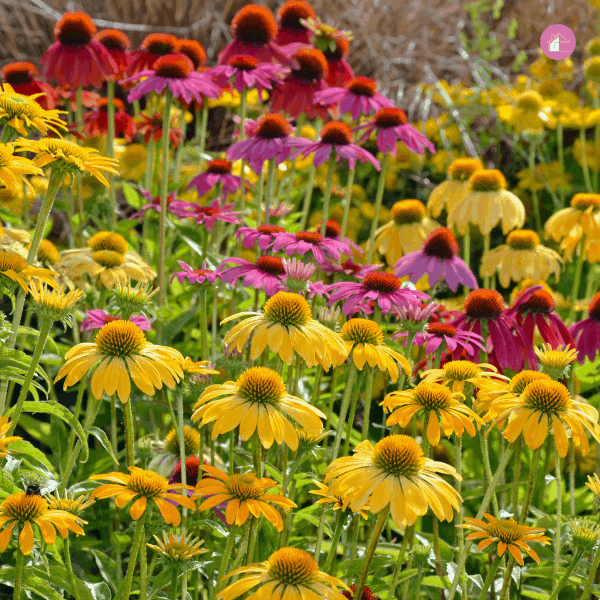
13. Echinacea
Echinacea (Echinacea purpurea), also known as Purple Coneflower, is popularly known for its immune-boosting properties. They are herbaceous perennials in zones 3-9 and can be started indoors or direct sown. It is one of the most popular garden ornamentals. Its showy purple flowers attract butterflies and bees.
All species of echinacea have medicinal properties. All parts of the plant including roots, leaves, and flowers can be used to create tasty, immune-boosting teas and tinctures. Studies showed that echinacea has immunostimulant, bacteriostatic, and antiviral activity.
It can also be used as an antimicrobial anywhere in the body. It activates macrophages, increases white blood cell levels, and inhibits microbial hyaluronidase (an enzyme that causes host cells to break down.)
As an herbaceous perennial, Echinacea can come back year after year in your garden. Plant in full sun for the best flower production, 1-2 feet (30-60 cm) apart; grows to 3-4 feet (.9-1.2 m) tall.
Keep seedlings well weeded. Echinacea purpurea is the easiest species of echinacea to grow in most garden soils, but Echinacea Angustifolia is a highly prized medicinal to many medicinal gardeners.
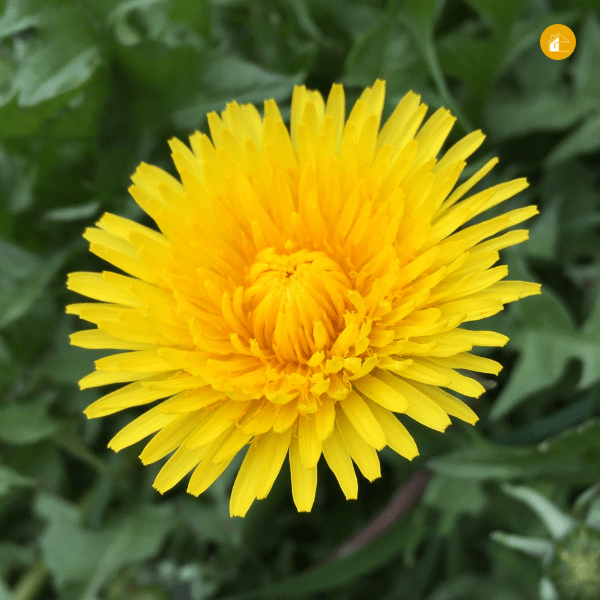
14. Dandelion
Some people see this dandelion as one of those weeds. But actually, it is a powerful medicinal herb. It is native to Europe, and also found throughout mild climates of the northern hemisphere. The most common variety of this yellow-colored flowering plant is the taraxacum Officinale.
Dandelion is used as a medicinal plant for tonsillitis, infections of the kidney or bladder, and for upper respiratory tract infection. It is also great for liver and kidney health as it has diuretic properties.
As an edible plant, the roots can be roasted and added to teas or coffee for flavor. The leaves can be eaten as salads and other foods. In some studies, dandelion can also be used to treat certain cancer, acne, liver disease, and digestive disorders.
Dandelions are very easy to grow. The seeds are sown directly on the ground. They readily reseed themselves, usually in another area. Be ready to clear them off from the place where you don’t like them to grow.
Leaves can be harvested after a few weeks. The younger leaves are the least bitter in flavor. When harvesting the blossoms, prevent them from closing. They are best when they are used fresh. The roots can be harvested anytime.
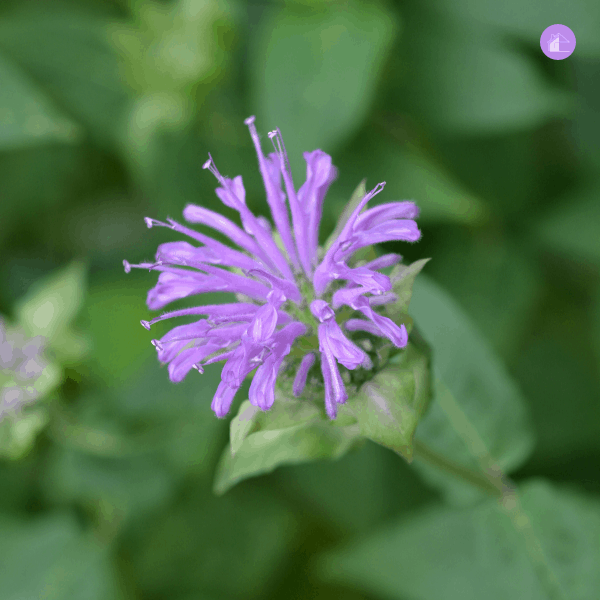
15. Wild Bergamot (Monarda fistulosa, Lamiaceae)
Wild Bergamot is an easy-to-grow perennial that belongs to the mint family. It grows 2-5 feet long and has purple clustered flowers. The whole plant above the ground is edible and medicinal.
The leaves can be raw or cooked, included in salads, or as a flavoring in baked goods and other dishes. It has some kind of thyme flavor. Fresh or dried flowers are very aromatic and can be used as tea, and as garnish. The whole stem with the leaves and flowers can actually be cut off and be used as a potherb.
Wild bergamot is also useful for attracting pollinators like bees, butterflies, and hummingbirds to your garden. It is perennial in zones 4-10, does best in full sun to partial shade, thus, it is more likely to thrive in hotter and drier conditions.
This medicinal plant is one of the important medicines for Native Americans. It is used to treat infections and digestive issues. Wild bergamot is anti-inflammatory, antimicrobial, and diaphoretic (induce sweating to break a fever).
When made into a poultice, it is said to relieve headaches and treat conditions like insect bites and boils. Another benefit is the aroma of this herb can repel mosquitoes.
The seeds are so tiny and must be planted on the surface of the soil and misted or bottom watered (to avoid burying them too deep in the soil). To make it easier for some gardeners, they just purchased a plant or seedling.
Others would divide the root from a plant. Wild bergamot spreads vigorously by runners, in a similar fashion to mint. To harvest, gather the stems, leaves, and blooms at the peak of flowering and use them fresh or dried.
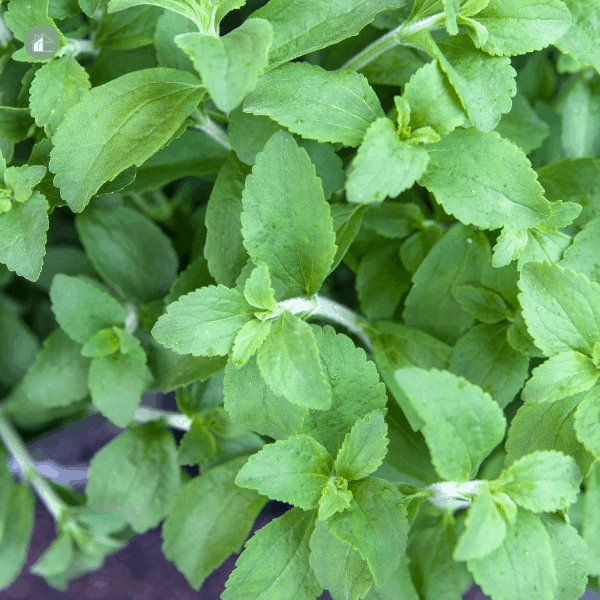
16. Stevia
Stevia rebaudiana Bertoni is a bushy perennial shrub that is part of the sunflower family. It grows up to one meter and with 2-3 cm long, ovate, green leaves with small white flowers.
Although there are over 150 other Stevia plant species, only the Stevia rebaudiana species contain the sweet steviol glycosides. It is 200-300 times sweeter than table sugar. Other names are sweet-herb, honey yerba, honey leaf, yaa waan, and candy leaf.
Stevia is very popular not only as a sweetener, but also for its hypoglycemic, hypotensive (lowers blood pressure), cardiotonic (tones, balances and strengthens the heart), and antimicrobial activities. There are studies and documents proving that stevia has its own and natural constituents which are very much helpful for human health.
Stevia can easily be propagated thru seeds and stem cuttings. It needs at least 6 hours of full sun, with consistently moist soil but not soggy, and well-draining when planted in a container. Like cilantro and basil, once stevia plants grow flowers, the flavor of leaves starts to diminish or even develop a bitter aftertaste.
To avoid losing its sweetness or turning bitter, pinch off flower buds as they form, or trim stems to encourage the growth of new stems and leaves rather than flowers. They can be used as fresh or dried leaves, and as an extract. Commercially, it can also be in powder form.
So, there you have it. Which medicinal plant do you choose to be included in your medical garden?

